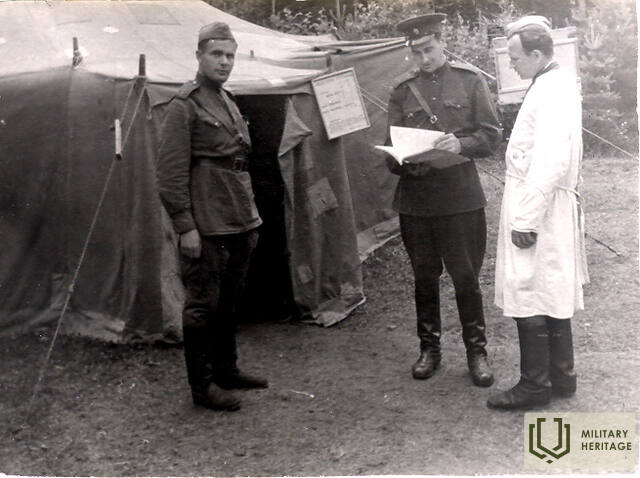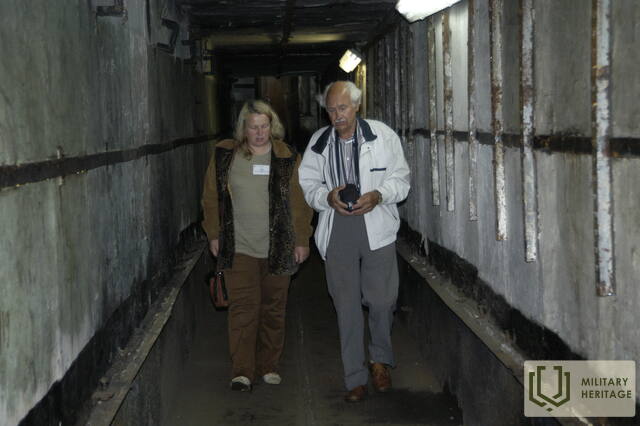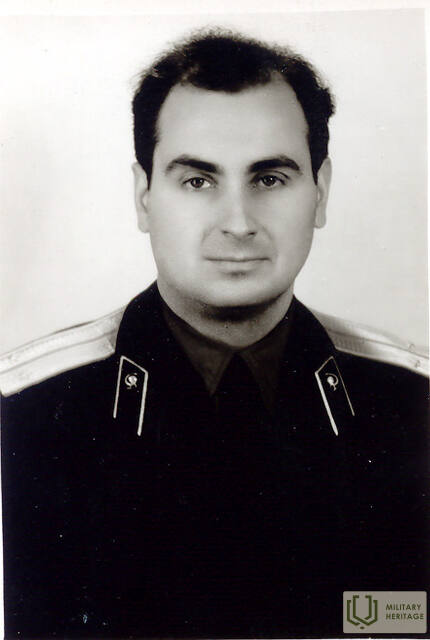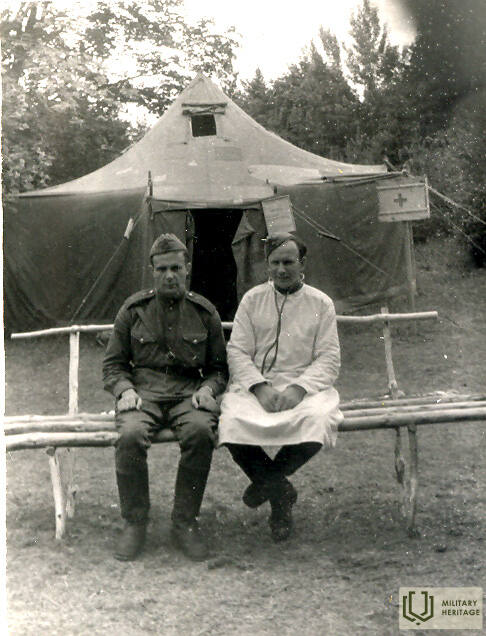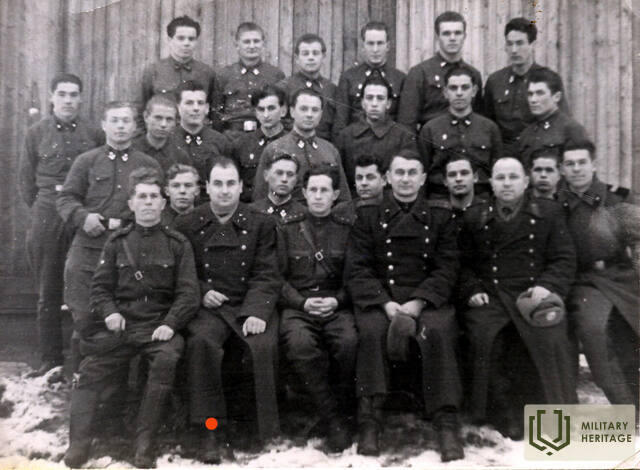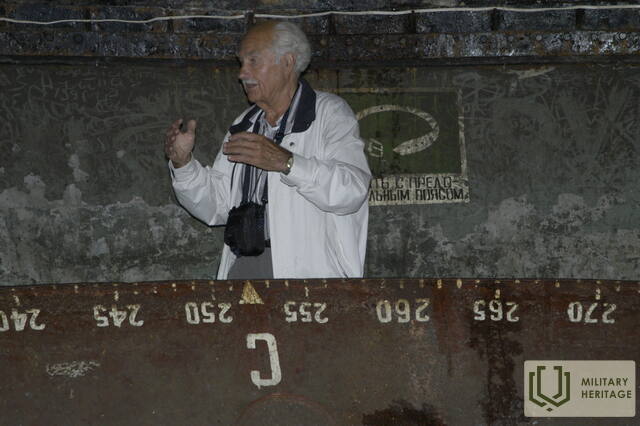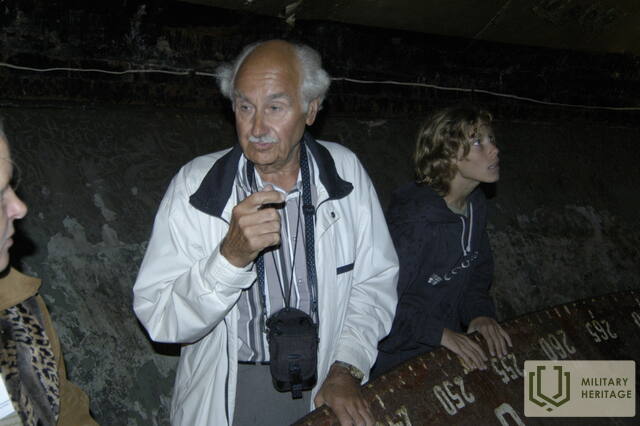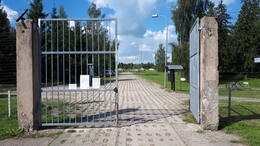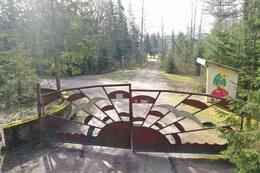K. Meškauskas' memories of the Plungė district missile bases
The former missile bases in the Plungė district hide an impressive history of the Cold War - from the secret transportation of rocket fuel at night to the construction of underground shafts with artificial pressure. The memoirs of doctor Kajetonas Meškauskas reveal little-known details about the activities of the Soviet military and the lives of the builders. His story is not only about the base, but also about a man who found himself in the middle of history.
Memoirist Eugenijus Bunka met Kaunas resident Kajetanas Meškauskas completely by chance, but his memories of the construction of the Plokštinė missile base became a real treasure in filling the holes in history related to this military facility.
After graduating from Kaunas Medical Institute in 1959, Kajetonas Meškauskas did not want to join the only party at that time and soon received a draft to the army. Not for the three years of mandatory service, but an appointment to work for life. From the first day, he was assigned to a military construction unit, which he soon established in the Šateikiai forests of the Plungė district. A ground-based missile launch site was being built here, and an underground one in Plokštine near Lake Plateliai. In 1960, four military construction battalions were formed. Each had four companies, and each company had 125 construction workers. Although the Plateliai residents tell their guests that, in order to keep the secret, they did not take a single Lithuanian into the construction units, Kajetonas Meškauskas knows very well that it was the other way around. At the beginning, only Lithuanians served in one battalion, Estonians in another, and Latvians in the third, and they were recruited into the road construction battalion regardless of nationality; it was important that there was a driver, tractor operator, or excavator operator.
Another legend is about why construction structures and base equipment were transported to Plokštinė only at night. A “scooter” would drive ahead of the column, from which soldiers would jump out and chase late passers-by or onlookers away from the windows so that they would not see the cargo. In fact, according to K. Meškauskas, rocket fuel was transported at night. Due to the increased pressure in the tanks, its poisonous vapors would seep through the safety valves, which is why the fuel was transported at a time when there were no people on the roadside. For the same reason, the soldiers would chase everyone away from the road, and they would tell the residents of the houses along the road not to go near the windows and to close them.
Šateikiai railway station was closed to passenger trains during construction and turned into a loading yard for construction structures and military equipment. Powerful MAZ tractors, which had been in service for only a year, transported heavy loads northwest of the station - to Šateikiai forests and east - to Plokštinės forest on the eastern shore of Lake Plateliai.
Hangars for mobile missiles were built in the fields, their launch pads were concreted and painted green, and the bushes and trees that camouflaged them grew in special pots. If necessary, they could be quickly moved aside.
Despite all the security measures, as soon as work began in Šateikiai, the Voice of America immediately reported on the construction of the base, telling in detail about the technical characteristics of the missiles and the future equipment of the site. As K. Meškauskas said, military counterintelligence resorted to investigating. At first, they took up the local pastor and his entourage, but it soon turned out that the wife of the construction unit commander was bragging to the local women about her husband and what he was doing here. The words easily reached the person who needed the information.
The base in Šateikiai was built quickly, but in Plokštine, the construction workers worked until 1962. One battalion rented residential houses for officers in Plungė, later a barracks town in the forest, and the other two worked at the missile launch site.
While digging shafts at the Plokštinė missile base, the pits were flooded with water. Water was rushing through the sand into the dug pit 12 meters in diameter. Then it was decided to undertake a unique job. A cover was poured in the future shaft, and about twenty mobile compressors were brought in, which maintained a pressure of two atmospheres in the cavity under the cover. The water stopped flowing. Five soldiers and their supervisor would climb into the pit through a special chamber. The excavated sand was lifted to the top through a special sluice. Sometimes Kajetonas Meškauskas also had to visit the pit. The soldiers would work for three and a half hours, and would spend two hours in the chamber getting used to the pressure before and after work. According to the doctor, there would be some clever people who would try to open the tap more after the shift inside the chamber so that the pressure would decrease faster and they could climb out. However, the paramedic on duty sitting outside would immediately turn off the tap, because nitrogen bubbles formed in the blood at higher than normal pressure could clog the blood vessels.
Until now, visitors were told that the 4 shafts were built in 8 months, but K. Meškauskas clarified that the soldiers dug the first one alone for a year. The doctor does not know when the construction was completed, because he was transferred to another unit.
K. Meškauskas remembers that the diameter of the pit for the shafts was originally 12 meters, and the depth was about 30 meters. Now the shafts are 6 meters in diameter, 27 meters deep. The bottom and walls have three meters of concrete and metal.
According to the construction project, gravel for road construction and repair had to be transported from a quarry near Kartena - almost fifty kilometers. The chief engineer of the road construction company, Captain Motiejūnas, looked around the area and found excellent gravel in Stirbaičiai, just outside Plateliai towards Gintališkė. The distance to the road under construction was about five times shorter than to Kartena. The local authorities did not dare to oppose the military, so the excavators rushed closer to Plokštīne.
However, Russian negligence put a foot in. From the army headquarters, the flag of the winners of the socialist race arrived for the builders of Plokštīne, followed by inspectors. It turned out that, according to K. Meškauskas, the drunken commander of the mechanization company, Captain Kapelka, had not written off the excess fuel. Kapelka happily entertained the inspectors for a week and treated them well until he covered up his mistake. After her, they distributed fuel left and right, but mostly poured it directly into the ditches.
Related timeline
Related objects
Cold War Exposition
On 31 December 1962, one of the first underground launch complexes for R-12 ballistic missiles in the Soviet Union, the Dvina underground launch complex, was put into operation
in Plokštinė Forest (Plungė district).
Between 1963 and 1978, four R12 medium-range ballistic missiles (SS-4 Sandal) equipped with a 2.3-megatonne nuclear warhead were deployed at the complex. All the missiles were aimed at Western European countries. This complex, together with similar surface-launched missile bases, formed a single Soviet nuclear arsenal in Lithuania, which was capable of destroying the whole of Europe. In its 16 years of operation, not a single missile was fired, despite the declaration of combat readiness during the Prague Spring in 1968.
After the Soviet soldiers left on 18 June 1978, the poorly guarded military facility was vandalised and looted. In 1993, when the complex was handed over to the Žemaitija National Park Directorate, its restoration began. In 2012, the Cold War exposition was opened. Today, this once very secret and guarded place is open to the public. A historical exposition on the Cold War period is on display at the former missile and equipment control room house. To date, it is the only museum in urope where a preserved underground missile launch silo is on display.
Plokštinė Military Town
In 1962, one of the first underground launch complexes for R-12 ballistic missiles in the Soviet Union, the Dvina, was put into operation in Plokštinė Forest (Plungė district).
A military camp was set up 0.5 km from the missile launch site. It occupied an area of 12 hectares, and approximately 30 buildings were built here for various purposes, including residential houses (barracks), officers’ headquarters, two canteens, a boiler house, a power station, a medical post, a club, a pig farm, warehouses, garages, and other structures.
The Plokštinė underground missile launching complex was operational until 18 June 1978. The Soviet soldiers left the area, taking only their weapons with them. In 1979, the management of the former military complex was transferred to the Republican Association of Agricultural Recreation Facilities of Plungė District, and the Plateliai Pioneer Recreation Camp “Žuvėdra” was established at the military campus site. The site was reconstructed and adapted to the needs of the camp, which operated until 1990. After the restoration of Lithuanian independence, the Pioneer Camp was closed.
Since 1993, the site has been managed by the Žemaitija National Park Directorate. In 2017, many of the structures on the military campus were demolished due to their state of disrepair. Today, there are about ten buildings left at the site, and visitors may see them from the outside. Information boards about the former buildings and their functions have been installed.
Šateikiai ground missile base
In 1960, the Šateikiai Ground Missile Base was built in the forests adjacent to Šateikiai of Plungė district. It was one of four bases of its kind in Lithuania. Four launching pads for R-12 (SS-4 Sandal) medium-range ballistic missiles had been built at the base. Once the signal was received, the missiles could be fired at the European countries of the NATO bloc.
In 1962, during the Caribbean crisis, nuclear missiles were moved from the Šateikiai missile base to central Cuba. The highest level of alert at this base was declared in 1968 during the Prague Spring – the democratic change in Czechoslovakia. At the time, one of the missiles was aimed at the Federal Republic of Germany because the NATO bloc was likely to support the Czechoslovak rebels with its own weapons.
The Šateikiai base was closed in around 1978 because it was considered obsolete and its maintenance – irrational. The closure was also prompted by the fact that by the 1980s it was clear that US intelligence services had identified the locations of stationary missile launch bases. The abandonment of the missile launch site caused structural damage to buildings. The remains of six reinforced concrete warehouses (hangars) are still present on the grounds of the base, as well as bush-covered surface launching pads for rockets.
Šateikiai railway station
Šateikiai railway station is built on the Kužiai-Telšiai-Kretinga railway line in the Plungė district.
In 1918, after the Republic of Lithuania declared its Independence, the formation of railway infrastructure began: an administration system was created, and preparatory courses for railway workers were organized. In 1923, the Cabinet of Ministers decided to build the Kužiai-Telšiai-Kretinga route. The densely populated Samogitia region was chosen, which did not yet have adequate connections with Klaipėda and other centers.
The stations were built after the rail network had already been laid and using standardized architectural designs. The passenger hall of Šateikiai station was built in a typical design, with 1 floor and a roof, and a warehouse was also located in the same building.
During the Cold War, Šateikiai railway station also became important in the military industry. In the period 1960-78, Šateikiai ground-based and Plokštinė underground thermonuclear missile launch bases operated in the Šateikiai and Plokštinė forests. Both during their construction and later, during the period of operation, construction materials, weapons and everything else were transported by train to Šateikiai and Plungė railway stations. It is believed that a huge arsenal of nuclear weapons was deployed at the Šateikiai ground-based base. This is confirmed by the fact that in 1962, missiles were transported to Russia from the Šateikiai ground-based missile base, Šateikiai and Plungė railway stations, and later by ship to Cuba (Cuban Crisis).
Šateikiai railway station currently operates as a regular railway station, with passenger and freight trains arriving and departing. Only fragmentary stories have survived, linking the station's history with the activities of former military missile bases.




